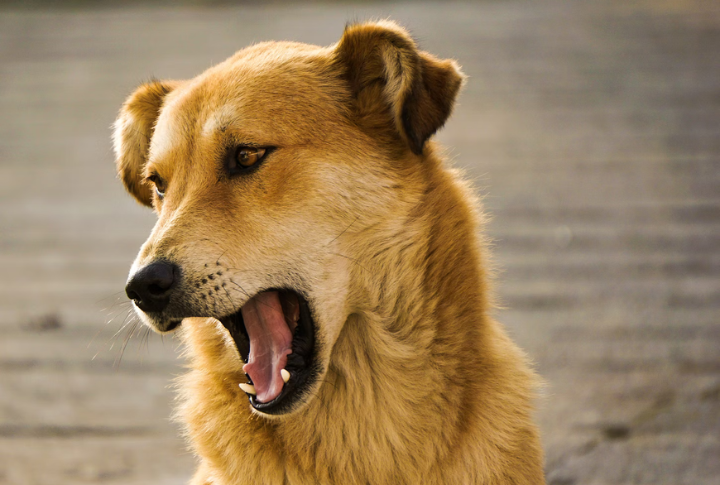Common Triggers That Make Dogs Snap And What To Do

Dogs are lovable companions, but sometimes, their reactions can leave you puzzled. One moment, they’re your best friend; the next, they’re baring their teeth. If you’ve ever wondered why dogs suddenly snap, it’s time to explore the hidden reasons behind this unpredictable behavior.
Fear-Driven Reactions

Sudden movements or unfamiliar people can trigger a fear response, which causes dogs to lose it. Desensitization training helps reduce fear-based aggression. Gradually exposing your dog to their fears can build confidence and prevent snapping. Plus, pairing exposure with praise reinforces positive associations and speeds up progress.
Guarding Food Or Toys

Training can help reduce resource guarding, but some dogs naturally protect their food and toys. Commands like “drop it” and “trade” encourage cooperation while rewarding calmness near food and toys, which eases tension. Dogs who feel unsure about their belongings may guard them fiercely, but with patience, they learn sharing brings rewards.
Protecting Their Space

Dogs value their personal space, and unexpected intrusion can provoke them. Allowing a dog to initiate contact and respecting their comfort zones reduces territorial aggression. Also establish safe spaces, like a designated bed or crate to improve their sense of security.
Pain-Related Aggression

A cranky dog might just need a little relief. A vet can pinpoint hidden pain and recommend treatments to ease their discomfort. Arthritis, sore teeth, or unseen injuries can turn patience into frustration. Solve the pain problem and your dog’s good mood returns.
Anxiety From Loud Noises

Fireworks and thunderstorms can push a dog into fight-or-flight mode. Counterconditioning by pairing stressful sounds with rewards can help. Using white noise machines or weighted blankets can also provide comfort and prevent fear-induced snapping. Calming pheromone diffusers or anxiety wraps might also do the trick; try it out.
Lack Of Early Socialization

Positive reinforcement training and gradual exposure help dogs build confidence in new situations. Controlled socialization teaches them to deal with unfamiliar people and environments without fear. A lack of early exposure can cause struggles with social anxiety, which leads to reactive behavior and difficulty adapting to new experiences.
Stress From Unpredictable Environments

Frequent relocations and inconsistent routines can cause stress-induced anger. Maintaining predictable schedules and using calming signals, such as slow blinking, can reassure your dog. Stability is key to preventing outbursts related to environmental stressors. Dogs struggling with constant change may also show signs of restlessness or excessive chewing.
Protective Instincts Over Family

Dogs have this natural instinct to protect their owners, sometimes perceiving harmless strangers as potential threats. If left unchecked, this protective drive can turn into defense. Controlled socialization, exposure to different people, and reward-based training can help your dog distinguish between real danger and everyday interactions.
Jealousy Over Attention

Dogs may snap when they feel overlooked in multi-pet or multi-human households. Teaching “wait your turn” and rewarding patient behavior reduces possessiveness. Providing equal attention through structured playtime ensures each pet feels valued without resorting to bad behavior. Without balance, jealousy can escalate into resource guarding.
Being Overstimulated During Playtime

High-energy play can trigger a loss of control and lead to accidental anger. Structured breaks during play reduce overstimulation. Redirecting excitement into controlled activities like fetch or tug-of-war ensures play remains safe and enjoyable. Dogs that struggle with self-regulation may also show signs like excessive mouthing or jumping.
Startled By Sudden Touch

A dog caught off guard—especially while sleeping—may react defensively. Approaching with soft verbal cues before physical contact helps prevent sudden reactions. If a dog is prone to snapping when startled, gradual desensitization training can help them become more tolerant of unexpected touch.
Frustration From Unmet Needs

Daily enrichment activities, like scent games, can reduce frustration. Ensuring sufficient physical and mental engagement prevents boredom-induced aggression. With no proper stimulation, restless dogs may become irritable or even destructive, as pent-up energy often manifests in undesirable behaviors like chewing or excessive barking.
Invasion Of Personal Space

Dogs have different comfort levels with physical contact, and some may snap when they feel trapped. Sudden hugs, rough petting, or being picked up unexpectedly can trigger defensive reactions, especially in children or around senior dogs with pain issues. It’s important to read a dog’s body language and allow them to initiate contact.
Dominance Or Status Assertion

While outdated dominance-based training theories have largely been debunked, some dogs still exhibit behaviors that resemble status assertion. To prevent this, establish firm but fair rules, reinforce good behavior with positive training, and avoid encouraging demanding or possessive actions. If snapping persists, professional training may be necessary.
Confusion From Mixed Signals In Training

Clear, consistent cues help prevent misunderstandings and keep training effective. Sticking to one set of commands and rewarding correct responses ensures dogs understand expectations and reduce frustration. In the lack of consistency, dogs become confused, stressed, defiant, or mad, which can escalate over time.






